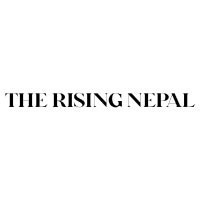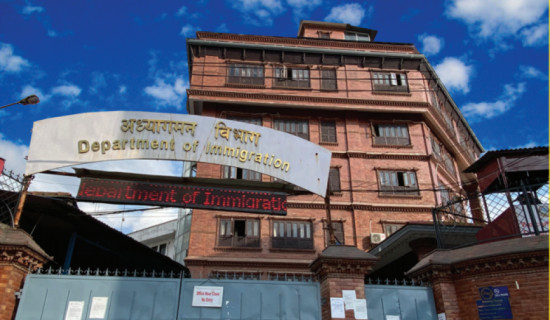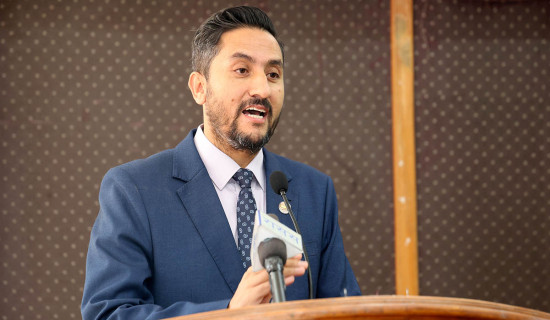- Tuesday, 30 December 2025
Bhandari’s Activism Ruffles Feathers
Should former presidents and vice presidents join politics after serving in the highest positions of the country? This question has come to the fore after former vice-president Nanda Bahadur Pun was appointed as the vice-president of the CPN-Maoist Centre and former president Bidya Devi Bhandari is set to join the CPN-UML. Bhandari, who was elected as president twice in 2015 and 2017, renewed her party membership last year and has been busy in a flurry of its activities, much to the surprise of its top brass.
They taking state facilities they are entitled to in their capacity as its former head and sub-head. And there is a growing call that they should relinquish allowances and other facilities if they take a plunge into politics. The constitution is silent about whether former presidents and vice-presidents can re-enter politics. But the general practice is that they should stay off politics and be engaged in activities that are above party politics.
Neutrality
Upon being appointed to the country’s highest position, the president and vice-president give up their party membership as they are considered the custodians of the constitution and guardians of the people. Though the sitting presidents are obliged to sign on the dotted line as per the decision of the Council of Ministers, their words and actions reflect neutrality and impartiality owing to their dignified position. And they are supposed to nurture the same image after retiring from the post.
The political fraternity has been taken aback after Pun became vice-president of the Maoist Centre. Though there is not much murmuring against Pun’s entry into the party, it is believed that Maoist Centre chair Pushpa Kamal Dahal Prachanda inducted him in the party’s top committee to silence those who are ganging up to challenge his unrivalled leadership. Prachanda has been at the helm of the party for more than three decades. He has led the party in both insurgency and peace times. But it is now on a steep decline owing to its multiple divisions and a series of leadership missteps.
Even if Pun was brought to the party’s higher echelon to step into Prachanda’s shoes, it is unlikely that he could do so, as many heavyweights are setting their sights on the top post. Pun, considered the military commander of Maoist decade-long insurgency, does not have much charisma to glue the various factions within the party. And it does not behove him to remain in the party while enjoying the state perks and facilities at the same time. He can also be seen as Prachanda’s handpicked choice, designed to block the rise of new leadership, which will only widen the intergenerational gap in the party.
Similarly, former president Bhandari is fuelling speculations about her comeback into the party. Widow of late Madan Bhandari, who propounded the party’s guiding principle – janatako bahudaliya janabad (people’s multiparty democracy), she carries a long legacy in the party that is currently leading the coalition government. She was elected to the vice-chair of the party at its 9th general convention held in Kathmandu in 2014. She was lucky enough to be able to hold the highest constitutional post twice but she was also blamed for favouring the party and decisions of the government under it.
Upon leaving Sheetal Niwas, Bhandari kept security personnel with her but returned facilities, including vehicles, intending to be active in politics, according to media reports.. Nonetheless, the UML establishment is not happy with Bhandari’s involvement in party-related activities. Sometime back, UML chair and Prime Minister KP Sharma Oli, in different party meetings, had suggested that Bhandari should refrain from active politics and happily live with what the state has provided to her. But a section of party leaders and cadres has shown no objection to her possible re-entry into UML.
What is more interesting is that she is confidently brushing aside all criticisms aimed at her possible entry into the UML. This implies that she has a desire to be the executive head of the country and unite the fragmented left groups. Bhandari has not announced publicly to join the UML. In a recent interview with a Nepali news portal, she said that she completed a two-year cooling-off period after completing her term as president and was ready to join the party if the cadres demanded so.
Leadership selection
“As the leadership will be chosen through the general convention, it's positive that party members are thoughtfully considering leadership options,” she said. Responding to a query whether her entry into the UML will intensify polarisation, she said that the process of electing leadership through convention would not lead to polarisation, as there's no substantive reason for it. Emboldened by the support of certain leaders from within the party, Bhandari went on to claim that her entry would not endanger the party leadership. She has also demanded that the UML leaders and workers, who are calling for her return to leadership, should be entrusted with greater responsibilities. It has been surmised that her entry might bring a formidable challenge to the current party leadership.
However, the return of Pun and Bhandari to active politics has raised more questions than answers. The general public might pose a moral question to them: Will it be constitutional and ethical to join politics after becoming the nation’s highly honourable figures? Does it set a good precedent for the country’s constitutional practice? As the existing laws do not bar them from re-joining politics, it is up to themselves to decide on the matter. But their entry into politics will be an experiment in national politics, while calling for constitutional clarity on it.
(The author is Deputy Executive Editor of this daily.)




-square-thumb.jpg)
-square-thumb.jpg)









-original-thumb.jpg)

